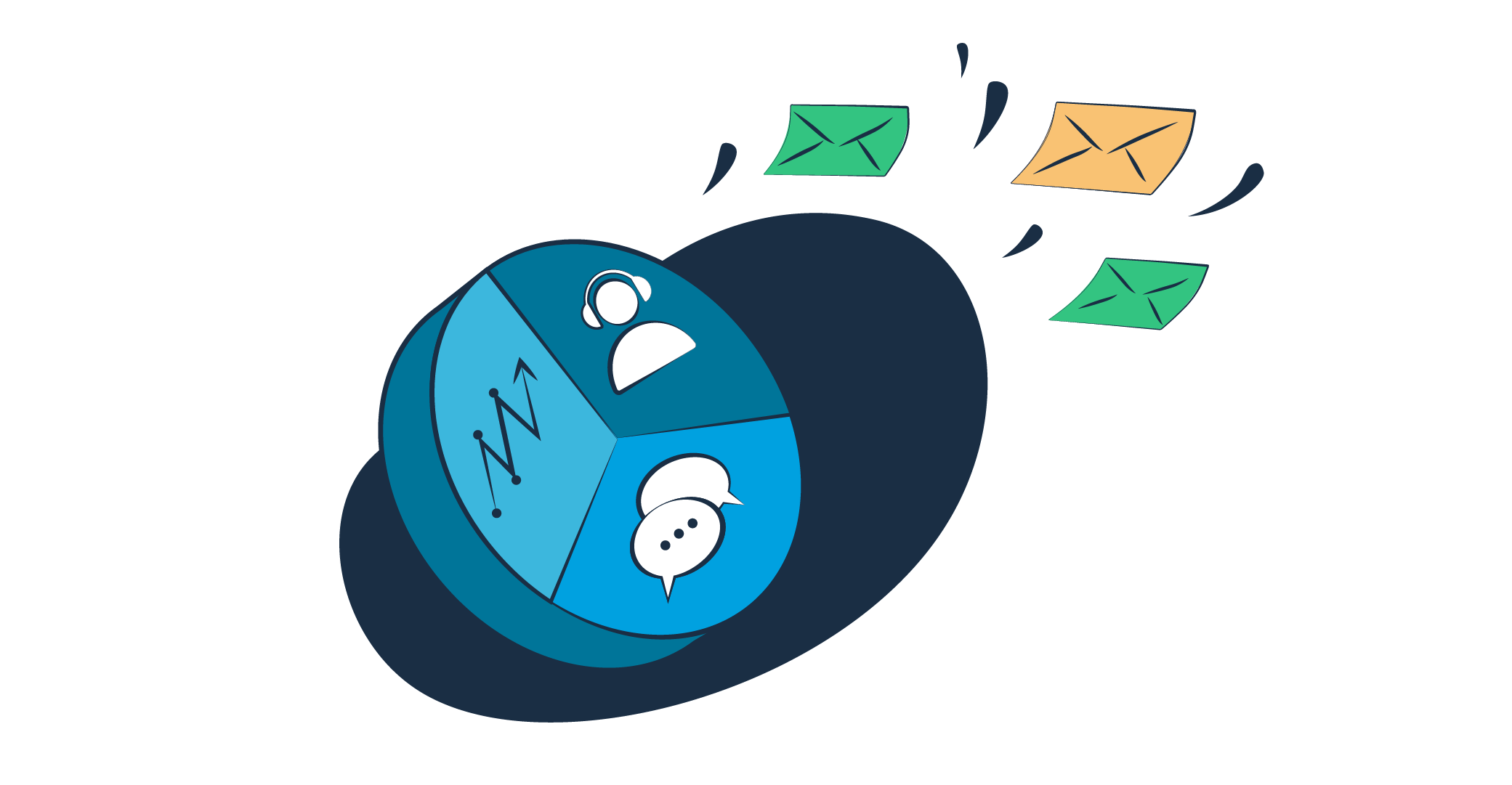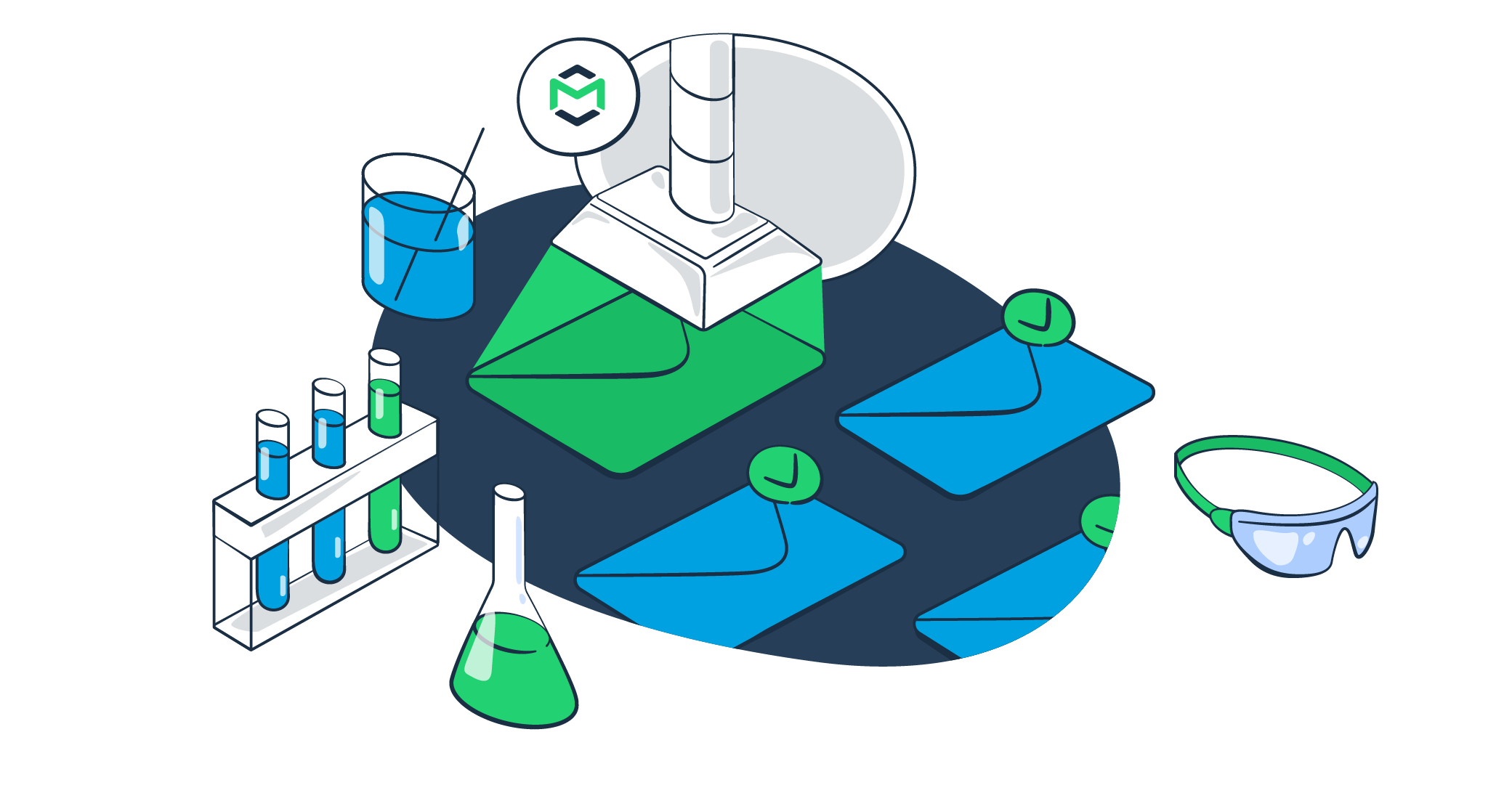Whatever happens with fresh marketing channels, email marketing continues to provide the most effective, personalized touchpoints with customers.
Given the estimated ROI of $40 per every dollar spent last year, it’s no surprise lots of companies now plan to boost their email marketing budget.
Riding that wave, Salesforce evolved way beyond just a CRM platform. The SaaS behemoth offers a host of features where Salesforce email marketing could be among the most powerful.
Why?
Simply because it leverages cloud infrastructure, actionable first-party data on customer journeys, and automation to give you an emailing experience that’s hard to rival.
In this guide, we explore Salesforce email marketing in detail.
You get a roadmap on how to use Salesforce’s email platform for successful customer engagement and retention. Plus, tips and tricks on email deliverability and optimization.
Can Salesforce be used for email marketing?
Yes, as mentioned, the cloud-based CRM allows businesses to execute highly targeted email marketing campaigns.
More importantly, email marketing integration with Salesforce is more than just blasting emails to recipients. It’s also about:
- Fostering premium customer experience
- Ensuring engagement between purchases
- Providing marketing automation tools and integrations for continuous business growth
How to use Salesforce for email marketing?
Harnessing the power of an email marketing platform is a recurring, multi-step cycle. It begins with understanding your audience and ends with campaign performance analysis.
Of course, with each new cycle, the goal is to determine how to optimize for the best email performance. And the sections below cover critical campaign management steps to ensure you design an email automation that’s going to convert.
Step 1 – Understand your Audience
It’s not news that ‘understanding your audience’ is the most important step in digital marketing (or any marketing, really).
But, Salesforce’s data management toolkit allows you to stop tapping in the dark and truly understand what the numbers tell you about the customer relationships.
With Salesforce’s customer data, you can segment the audience based on identifiers such as:
- Age
- Location
- Buying history
- Specific product interests
- And more
Using that level of segmentation and real-time data allows you to craft laser-focused campaigns aimed only at a specifically qualified cohort of your audience. And as a result, you should see much higher conversion rates.
Step 2 – Set up Salesforce for Email Marketing
After understanding your audience, you need to set up Salesforce for email marketing to a particular cohort of the audience. For example, “most recent buyers”, “abandoned chart”, “XY location”, “XY age group”, etc.
Doing that involves merging your email marketing strategy with Salesforce’s email marketing functions.
The CRM platform provides a cloud-based system that works seamlessly with its native marketing tools, allowing you to create and manage your email marketing campaigns from one place. But you can also integrate third-party tools to further improve the effectiveness of your email campaigns.
In later sections of this article, we’ll cover an exemplary campaign to show you what the setup might involve. Note that there’s no cookie-cutter solution for Salesforce. Among other things, the setup depends on:
- The campaign requirements
- The third-party email marketing software integrations you’re using (if any)
Step 3 – Create an Email Marketing Campaign
Salesforce offers various templates and drag-and-drop functions to create eye-catching and engaging emails.
Additionally, its dynamic content feature allows you to tailor the emails aiming to increase interactions and conversions right from the email itself.
For instance, a clothing e-commerce could assign attributes to emails and dynamically change the offering based on location. Ladies offers for the region with dominantly female shoppers, and likewise for male shoppers – all within the same campaign.
As for the steps to create and automate the campaign, we cover that in the How to send emails with Salesforce using marketing automation section below.
Step 4 – Personalize Emails
Assuming you understood your audience and how they behave, Salesforce’s email marketing functionality allows you to personalize the emails down to the specifics of each customer segment. This could involve tailoring your email content, subject lines, and call-to-actions based on specific audience characteristics.
Personalization is the key to improving engagement rates and ultimately driving conversions. From a technical perspective, it has to do with specific merge fields you add to your emails. But it also involves proper email list hygiene and segmentation.
Step 5 – Comply with Legal Requirements
Your emails need to adhere to the CAN-SPAM Act, and the GDPR if you’re catering to a global/European audience. The most important requirements include:
- 2-step opt-out/unsubscribe in each email
- Detailed email signature including physical business address
- Consent – your recipients need to agree to receive marketing emails (don’t buy email list databases from an uncompliant source)
The legal requirements pretty much wrap up the last pre-production step, prior to actually executing and monitoring the campaigns.
Now, we’ll show you how to design and send out an exemplary email marketing campaign. Then, we’ll go back to specific tips and tricks to design and optimize cloud email marketing for top performance.
How to send emails with Salesforce using marketing automation?
Based on HubSpot research, 71% of marketers stress that using automation software is among the most effective strategies for email marketing. And for Salesforce users, there’s hardly a better way to automate than to use the Flows.
Access the Flows by navigating to
Setup > Process Tools > Flows
Or, you can search for the Flows through the App Launcher.
Now, that you’re at the Flows, here’s how to put them to good use.
Create a new Flow:
- Click “New Flow” to create a new one
- Give your flow a name and select the type of flow you want to create. For sending marketing emails, you can choose the “Autolaunched Flow (No Trigger)” type.
- Configure the flow by adding elements such as assignments, decisions, or loops to perform logical actions.
- Click Save, type a Flow label, and click Save again.
Add Email Actions:
- In your flow, add an email action element (Send Email) to send marketing emails.
- Configure the email action element by specifying the email template, subject, recipient(s), and other relevant details.
- Consider testing your email templates with Mailtrap Email Testing to understand the following:
- How much mailbox providers support your template
- What’s the templates’ spam score
- How the template displays on mobile devices
- If you need to deug the template prior to sending
Tip: We even have a full tutorial to show you the power and ease of Testing Emails in Salesforce with Mailtrap.
Personalize the Emails:
- Use merge fields to dynamically populate recipient-specific information.
Quick Explainer:
Merge fields allow you to pull data from Salesforce records and insert them into the email. For example, you can use merge fields to include the recipient’s name, company, or any other relevant data in the email.
Test and Activate the Flow:
- Before activating the flow, it’s important to thoroughly test it to ensure that it functions as intended. Click the Debug button in the Flow Builder menu to access the corresponding function.
Note: The test mentioned here is different from testing your email template with Mailtrap we mentioned earlier.
- Use test data to simulate different scenarios and verify the email content and recipients. Click run and inspect the results.
- Once you are satisfied with the flow’s performance, activate it.
Schedule or Trigger the Flow:
- Depending on your requirements, you can schedule the flow to run at specific times or trigger it based on certain events or conditions.
- For example, you can schedule the flow to run daily at a specific time to send out marketing emails to the targeted audience. Keep in mind that this is just an example. The marketing email frequency depends on many different factors, and you don’t want to over-communicate via the email channel. Should that happen, it’ll reflect your email performance metrics and ultimately overall deliverability.
Finally, it’s worth noting that Salesforce Flows offer a range of features and capabilities, and the steps provided above are general guidelines for the email marketing context.
But, in our Send Mass Email with Salesforce article, we cover the steps to run email campaigns with:
Feel free to give them a try.
And if you need even more details on how to create and customize flows, you can refer to the official Salesforce documentation.
Salesforce email marketing best practices
As an email marketing solution, Salesforce isn’t immune to common principles of best practices applicable to most marketing automation software.
But, we’d like to touch upon these and give you some numbers and pointers to turn our tips into an actionable checklist for each automated email you send out.
Build a Quality Email List:
- Focus on growing an engaged and permission-based email list. Quality is more important than quantity, and, as hinted, buying cold email lists isn’t an option.
- Use opt-in forms and double opt-ins to ensure that subscribers have willingly provided their email addresses.
- Regularly clean your email list by removing inactive or bounced email addresses to maintain a healthy sender reputation. Typically, you should go back to the subscriber list every month, or more frequently, depending on your email throughput and the list growth.
Craft Compelling Subject Lines:
- The subject line plays a crucial role in an email open rate. Keep it concise, clear, and relevant to the email content. Ideally, you shouldn’t have more than 5 words in the subject line, and it needs to be closely related to your email body.
- A/B test different subject lines to determine which ones perform better. And, don’t forget that, based on your audience and use cases, a very salesy approach might not yield the best results.
Optimize Email Design for Mobile:
- According to Statista, close to ~50% of users prefer to have communication from businesses via email and on their smartphones. So it’s essential to ensure that your emails are mobile-friendly.
- Use a responsive email design that adapts to different screen sizes and resolutions.
- Keep the email layout clean and easy to read on smaller screens, avoiding excessive text or large images that may slow down loading times.
Bonus Tip: Use Mailtrap Email Testing to see what the emails look like on mobile.
Include a Clear Call-to-Action (CTA):
- Every marketing email should have a clear and prominent call-to-action that encourages recipients to take the desired action. But avoid using actionable language liberally with the aim to create a sense of urgency or exclusivity.
- A CTA like “Shop Now and Get 50% Off Today Only” could motivate recipients to click through and make a purchase. But some recipients have evolved to be immune to such email messages. Therefore, consider making your CTAs more nuanced and personalized.
Test and Analyze:
- Regularly test different elements of your emails, such as subject lines, CTAs, images, or email layout. And test the entirety of your email template with Mailtrap Email Testing.
- Use A/B testing to compare the performance of different versions and iterate based on the results.
- Analyze email metrics such as open rates, click-through rates, and conversion rates to gain insights into what works best for your audience. But always keep in mind that the umbrella metric is deliverability – how many emails actually reach your audience. And it’s closely related to the email infrastructure you’re using, list segmentation, as well as your sender reputation.
By following these Salesforce email marketing best practices, you can optimize your campaigns for better engagement, higher conversion rates, and improved ROI. Lastly, remember that this is a cycle where your should continually refine your strategies based on data and feedback to achieve sustainable, long-term success.
Salesforce email marketing tools and integrations
Honestly, the topic of salesforce email marketing tools and integrations merits its own article, as there’s a seemingly endless pool of options. But here, we’ll focus on the top three tools and integrations that’d be worth considering.
Salesforce Einstein
The AI-powered Einstein uses artificial intelligence to help you craft more personalized and effective email campaigns. The tool itself is relatively new, and we’re yet to see how it performs on real large-scale, production-side campaigns and recurring client communication. But, for now, the offering seems very promising.
With Einstein, you can deliver data-driven content that resonates with your audience and drives better results. And the AI assistant, or better say, co-worker, is available with different Salesforce product clusters and editions.
Also, if you’d want to integrate Einstein, you’d need to reach out to Salesforce to get a quote on the ready-made solution.
Don’t expect it to be cheap as it’s designed to take over a chunk of the tasks traditionally covered by support, sales, or marketing teams. Plus, Einstein offers low-code tools to create custom recommendations and predictions – it’s like having an extra person in the analytics team.
Salesforce Marketing Cloud Email Studio
The Marketing Cloud Email Studio is a platform of its own within the Salesforce ecosystem. On the surface, you create, send, and track email campaigns, aiming for higher engagement. And you get a pretty intuitive customer journey builder.
But, we dug a bit deeper, and the features we find most useful are:
- Customizable data extensions – key benefit: custom extensions can pull data from Reports or Campaigns for improved email personalization
- Advanced audience segmentation – key benefit: the number and scope of criteria you can use to segment the audience
- Subscription center – key benefit: the subscription center is customizable, and your recipients can manage their own email preferences
That being said, when you compare Email Studio with the competitors, it’s obvious that some of the features are in need of an update. For example, reporting is kinda slow and we dare say sometimes confusing.
Though, that doesn’t mean it’s unusable or inaccurate, quite the contrary. But you need experience, and an understanding of SQL wouldn’t hurt either.
Salesforce Marketing Cloud Content Builder
This is a tool that simplifies email content creation and management. It offers a user-friendly interface for designing and coding emails, making it accessible to users with varying levels of technical expertise.
We find the Content Builder’s WYSIWYG editor and HTML coding capabilities handy. With these, you can create visually appealing and responsive email templates. But note that these might not be for those with low technical skills.
The Content Library that goes with the Builder is a nice addition to manage and store email assets. It’s the place to put your images, templates, and docs, and have everything in one place for easy recycling.
Go hit the target
As we wrap up the exploration of Salesforce email marketing, it becomes evident that this comprehensive solution provides marketers with the tools they need to succeed in the ever-evolving landscape of digital communication.
With its seamless integration with Salesforce’s CRM, powerful automation capabilities, and data-driven insights, Salesforce email marketing empowers businesses to craft targeted, personalized email campaigns that truly resonate with their audience.
By leveraging this platform, marketers can build stronger relationships, nurture leads, and drive conversions. So, if you’re ready to take your email marketing strategy to the next level, consider harnessing the power of Salesforce email marketing and unlock new possibilities for your business.





